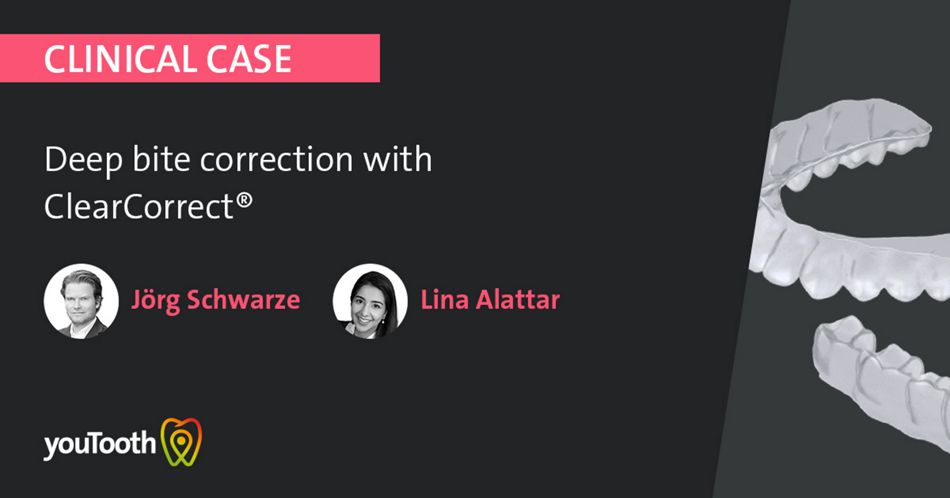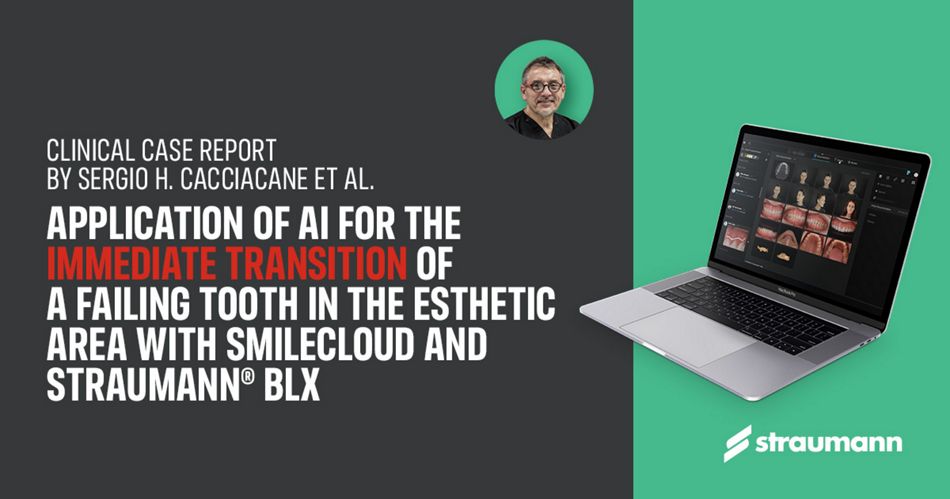New technologies also mean lessening the need for conventional laborious procedures and increasing more personalized and efficient patient care.
A helping digital hand
Under the umbrella of the fourth industrial revolution, automation, data handling and data analysis, as well as robotics, have become useful tools among dental clinics all over the world. The development of this type of technology has fostered relationships between man and machine, lessening the need for conventional laborious procedures and increasing more personalized and efficient patient care. The ways in which AI is doing this is through Machine Learning (ML) algorithms and Artificial Neural Networks (ANN) where digitally-guided techniques can be generated to aid in implantation, accurate oral scans, and overall virtual treatments.
Dental diagnostics and AI
A prominent area in which AI seems to be trending is in diagnostics. Dental professionals have become more reliant on software that is able to provide a thorough analysis of imagery in oral and maxillofacial radiography. With the assistance of AI technologies, dental ailments can be identified automatically which allows dentists to swiftly address the problem and prevent further issues. Furthermore, such automated processes reduce the total time required for certain treatments.
Dental Monitoring can save time during the treatment which means that appointments have only to be arranged if there were clinically relevant events.
In a recent case using ClearCorrect® for deep bite correction, AI was used to evaluate intraoral smartphone photos in order to remotely monitor the effect of a patient’s clear aligners throughout treatment. This AI-powered Dental Monitoring shortened the intervals where the clear aligners had to be changed and allowed for continuous quality checks which ultimately acted as a preventative measure against additional issues. Involved in this case, Lina Alattar, dentist in orthodontic professional development and specialist dentist Dr. Jörg Schwarze noted that“The information on the clinical objectives with Dental Monitoring saved time during the treatment and meant that appointments were only arranged if there were clinically relevant events.”
A digital smile
Esthetic dentistry has also seen an increase in AI-integrated, multifunctional digital platforms which can help in the visualization of a patient’s smile in a collaborative workspace. An example of this is Straumann’s Smilecloud platform. Launched in 2019, this platform uses tools to view realistic virtual mock-ups, centralize data, and integrate biometric data into functional prostheses designs. This addresses issues such as data fragmentation, inaccessibility, and treatment unpredictability when using traditional dental processes.
The Smilecloud platform uses tools to view realistic virtual mock-ups, centralize data, and integrate biometric data into functional prostheses designs. This addresses issues such as data fragmentation, inaccessibility, and treatment unpredictability when using traditional dental processes.
As mentioned by Smilecloud co-founder, Florin Cofar, the Smilecloud platform works as a search engine for anatomy where technicians, specialists, dentists, and others can stack and synchronize their workflows on each other to create comprehensive references. These references can then be used in dental models, orthodontic, and surgical planning. Furthermore, taking into consideration a patient’s facial features and tooth dimensions, the software can create the optimal smile designs that both patient and dental professionals can review. Cofar continues:
“Centralized collaboration is fundamental in any scenario that requires teamwork. You have everybody having the same perspective; looking at the same thing, in the same place.’’
Implant with ease
Earlier this year, AI tools, through the Smilecloud platform, aided in the immediate implantation and restoration of a patient’s smile. More specifically, AI-assisted algorithms were used for restorative planning and waxing based on prosthetic anatomic virtual patient models. This ensured placement precision as well as the ideal hard tissue healing and soft tissue adaptation. The dental professionals working on this case stated: “Smilecloud was a valuable asset in the whole journey, as we used it to communicate with the patient about the potential outcome and benefits of an immediate restoration after an immediate implant, engage with the patient using Smilecloud and show in real-time how we could update her smile and also the designed provisional.”
AI and additive manufacturing
In tandem with advanced visualization, AI has been used to improve additive manufacturing processes involved with the production of 3D printed dental surgical guides, splints, implants and other tools. More and more AI-assisted, cloud-based programs have been popping up in the dental industry to bridge the gap between data and tailored production. CAD/CAM data is often translated to STL format for layer-by-layer 3D printing. AI-assisted slicing software enables a smooth shift between these formats and also offers the ability to detect discrepancies within a 3D-printed dental model before it is manufactured. As one can imagine, this is effective in making the design-to-actualization process faster for a patient awaiting treatment.
AI-assisted slicing software enables a smooth shift between different formats and also offers the ability to detect discrepancies within a 3D-printed dental model before it is manufactured.
3D printing and AI, as supplementary tools for dental practices, have been shown in use cases where temporary fixed restorations, impression trays, and drill templates were made and applied in a patient’s treatment. Materials for 3D printing are also being developed with the help of AI. Novel additive manufacturing materials must be qualified before commercial use. AI has been utilized in several research studies as a tool to predict and analyze material behavior. This reduces the trial-and-error involved with finding the appropriate parameters for 3D printing, opening up more additive manufacturing applications with dental procedures.
Robotics and admin tasks
Although limited in current applications, AI has also been explored within robotics to automate surgical procedures. Robotic arms are being equipped with sensors and cameras to perform intricate tasks within the oral cavity while reducing human error. The integrated sensors have the ability to send immediate feedback to technicians, ensuring the safety of the patient. This advancement can also be used as a time-cutting method, which can give a dental practice more time for other patient-related tasks. Robotic procedures also have the potential to perform less invasive surgeries for maximum patient comfort.
Conversely, on an administrative level, AI has somewhat gone unnoticed. Several clinics have implemented chatbot functions to automate 24/7 responses to patient inquiries. Furthermore, scheduling and grammar-correcting tools that are often missed, make our offices more efficient and are powered by AI technologies in such a seamless way that practices have now become accustomed to it when completing small but necessary tasks. All of this contributes to the day-by-day operations of a dental clinic.
Will everything be AI?
3D imaging, data management, dental treatment planning, monitoring, surgery, and admin are just some of the areas where AI has been trending. However, some may ask: Is the increasing use of AI a good thing? In many examples previously mentioned; it is. Nevertheless, there are some concerns raised. Patient perspectives in regards to AI have been studied and it was noted that the three largest concerns patients had were the surrounding impact on the workforce, doctor-patient relationships, and increased dental costs.
The rapidly growing change to digitized processes could allow the inclusion of AI in almost every facet of dental practices.
Yes, streamlined workflows and overheads are great for saving time and costs. However, the disruption it will cause in administrative and technical roles will be significant. This means that those entering the dental industry will have to learn a new set of skills to work alongside AI technologies - that’s if the demand for those roles isn’t already met. What’s more, with the push for AI, patients may feel that their care is less personable, even though their dental treatment is more personalized than ever. With remote dental monitoring, tele-dentistry, and minimized face-to-face clinic visits, patients can feel like there are fewer chances to communicate with their assigned dentist.
Streamlined workflows and overheads are great for saving time and costs. However, the disruption it will cause in administrative and technical roles will be significant.
Additionally, the cost-effectiveness of AI-based dental software seems advantageous but still has to be analyzed when it comes to the patient’s expenses. In addition, AI systems, which are consistently cloud-based, have caused a discussion on the security and confidentiality of a patient’s personal information.
Conclusion
To conclude, the dental industry and healthcare sector alike, have seen trends in AI-based automation for data management, treatment planning and predictions, the production of customized tools, and general clinic operations. These trends have proven to cut down the time and cost it would take to conventionally do such tasks. The rapidly growing change to digitized processes could allow the inclusion of AI in almost every facet of dental practices. Nevertheless, development is still needed in such software where anomalies occur that can only be tackled by human ingenuity. As such, despite being able to learn repeated human functions, AI itself still has a learning curve to conquer. Those working within the dental industry also have a challenge ahead to find new ways of implementing and optimizing its potential.
Further Reading:
Want to learn more about how AI and other Industry 4.0 technologies are contributing to dentistry? Check out these articles:
· Deep bite correction with ClearCorrect®
· Artificial intelligence in the service of esthetic dentistry
Author's testimonial
Smilecloud was a valuable asset in the whole journey, as we used it to communicate with the patient about the potential outcome and benefits of an immediate restoration after an immediate implant, engage with the patient using Smilecloud and show in real-time how we could update her smile and also the designed provisional, all in the same platform was game-changer for the patient (and also the clinical team).
References:
- Ahmad, P., Alam, M. K., Aldajani, A., Alahmari, A., Alanazi, A. M., Stoddart, M. J., & Sghaireen, M. G. (2021). Dental Robotics: a disruptive technology. Sensors, 21(10), 3308. Link
- AI in healthcare market size worldwide 2030 | Statista. (2023, June 28). Statista. Link
- Ayad, N., Schwendicke, F., Krois, J., Van Den Bosch, S., Bergé, S., Bohner, L., Hanisch, M., & Vinayahalingam, S. (2023). Patients’ perspectives on the use of artificial intelligence in dentistry: a regional survey. Head & Face Medicine, 19(1). Link
- Ding, H., Wu, J., Zhao, W., Matinlinna, J. P., Burrow, M. F., & Tsoi, J. K. (2023). Artificial intelligence in dentistry—A review. Frontiers in Dental Medicine, 4. Link
- Edwards, D. (2023, June 29). Dental Robotics: a disruptive technology explained. Robotics & Automation News. Link



